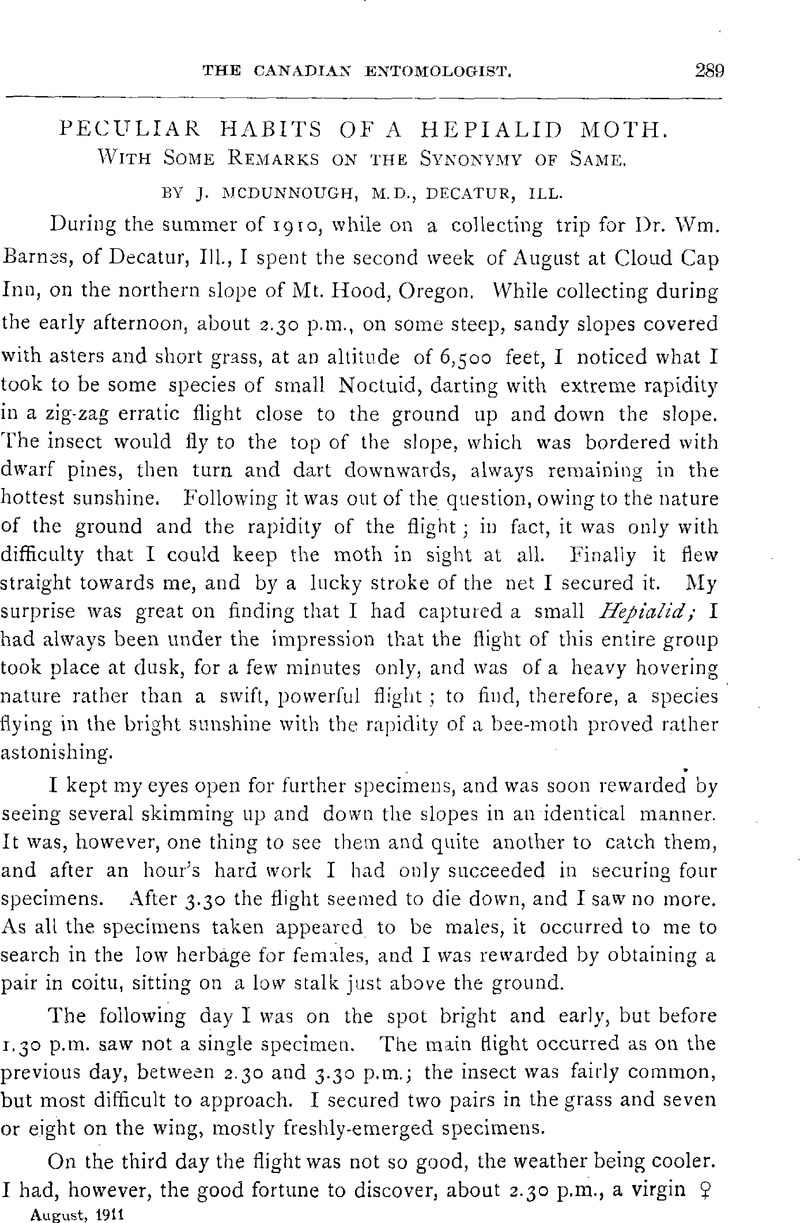Crossref Citations
This article has been cited by the following publications. This list is generated based on data provided by Crossref.
Puri, V. D.
1958.
Studies on the anatomy of the sugarcane moth borers.
Proceedings / Indian Academy of Sciences,
Vol. 48,
Issue. 2,
p.
79.
Freeman, T.N.
1962.
James Halliday McDunnough, 1877-1962.
The Canadian Entomologist,
Vol. 94,
Issue. 10,
p.
1094.
MALLET, JAMES
1984.
Sex roles in the ghost moth Hepialus humuli (L.) and a review of mating in the Hepialidae (Lepidoptera).
Zoological Journal of the Linnean Society,
Vol. 80,
Issue. 1,
p.
67.
WAGNER, DAVID L.
and
ROSOVSKY, JUDY
1991.
Mating systems in primitive Lepidoptera, with emphasis on the reproductive behaviour of Korscheltellus gracilis (Hepialidae).
Zoological Journal of the Linnean Society,
Vol. 102,
Issue. 3,
p.
277.
Kuenen, L.P.S.
Wagner, D.L.
Wallner, W.E.
and
Cardé, R.T.
1994.
FEMALE SEX PHEROMONE IN KORSCHELTELLUS GRACILIS (GROTE) (LEPIDOPTERA: HEPIALIDAE).
The Canadian Entomologist,
Vol. 126,
Issue. 1,
p.
31.
Nielsen, Ebbe S.
Robinson, Gaden S.
and
Wagner, David L.
2000.
Ghost-moths of the world: a global inventory and bibliography of the Exoporia (Mnesarchaeoidea and Hepialoidea) (Lepidoptera).
Journal of Natural History,
Vol. 34,
Issue. 6,
p.
823.
Allan, Rachel A.
and
Wang, Q.
2001.
Mating behaviour, and evidence for a female‐released sex pheromone, inWiseana copularis(Meyrick) (Lepidoptera: Hepialidae).
New Zealand Journal of Zoology,
Vol. 28,
Issue. 3,
p.
257.
Kan, Eiko
Hidaka, Toshitaka
Sato, Takashi
and
Kitajima, Hiroshi
2002.
Copulation and male calling in the swift moth, Endoclita excrescens(Butler)(Lepidoptera: Hepialidae)..
Applied Entomology and Zoology,
Vol. 37,
Issue. 1,
p.
163.
Kan, Eiko
Kitajima, Hiroshi
Hidaka, Toshitaka
Nakashima, Tadakazu
and
Sato, Takashi
2002.
Dusk mating flight in the swift moth, Endoclita excrescens(Butler)(Lepidoptera: Hepialidae)..
Applied Entomology and Zoology,
Vol. 37,
Issue. 1,
p.
147.
Turner, John R. G.
2015.
The flexible lek:Phymatopus hectathe gold swift demonstrates the evolution of leking and male swarming via a hotspot (Lepidoptera: Hepialidae).
Biological Journal of the Linnean Society,
Vol. 114,
Issue. 1,
p.
184.



